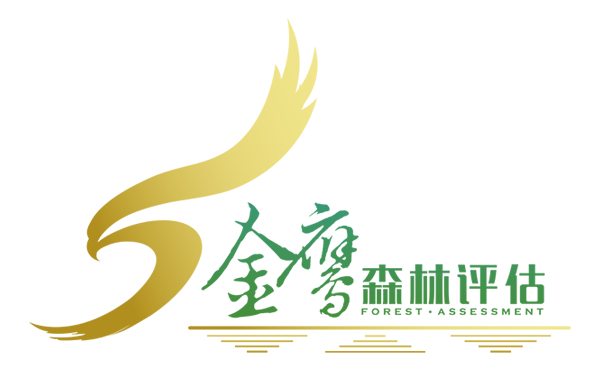发布:2025-10-06 浏览:0
一、前言森林资源资产一般可以分为林木资产、林地资产、景观资产以及野生动植物资产等几个大类。在森林资源资产当中林木资产占比较高,并且林木资产可以派生出其他森林资源资产,所以森林资源的价值通常都是以林木资产的价值测算来加以确定。因此,对于森林资源资产的调查与评估,主要是以林木资产调查为主。
1、 Preface: Forest resource assets can generally be divided into several categories: forest assets, forest land assets, landscape assets, and wild animal and plant assets. Forest assets account for a relatively high proportion of forest resource assets, and can be derived from other forest resource assets, so the value of forest resources is usually determined by measuring the value of forest assets. Therefore, the investigation and evaluation of forest resource assets mainly focus on forest asset surveys.
二、森林资源评估术语及定义(一)森林包括乔木林、竹林和国家特别规定的灌木林。(二)森林资源是林地及其所生长的森林有机体的总称。以林木资源为主,还包括林中和林下植物、野生动物、土壤微生物及其他自然环境因子等资源。(三)森林资源经济资产也称为森林资源资产。指在现有认识水平和科技条件下,由特定主体拥有或控制,通过交易或经营利用,能够或预期能够为其带来经济利益、具有经济资产属性的森林资源。按其评估对象范畴,分为林木资产、林地资产、景观资产等。(四)森林资源清单指森林资源评估时,由评估委托人(政府、自然人、法人或其他组织)向评估机构提交的需要评估的全部森林资源在评估有效期内的权属、数量、质量和空间分布情况的详细材料等。(五)森林资源核查指在进行森林资源评估前,对委托人提交的森林资源清单所列示的森林资源各要素进行调查复核确认的过程。(六)价值类型价值类型是指人们对评估结果价值属性的定义及其表达方式。 森林资源资产评估中价值类型包括市场价值和市场价值以外的价值类型。市场价值以外的价值类型包括投资价值、在用价值、清算价值等。 市场价值:指自愿买方和自愿卖方在各自理性行事且未受任何强迫的情况下,评估对象在评估基准日进行正常公平交易的价值估计数额。 投资价值:指评估对象对于具有明确投资目标的特定投资者或者某一类投资者所具有的价值估计数额。 在用价值:指将评估对象作为企业组成部分或者要素资产按其正在使用方式和程度及其对所属企业的贡献的价值估计数额。 清算价值:指在评估对象处于被迫出售、快速变现等非正常市场条件下的价值估计数额。 残余价值:评估对象因灾害清理和更新采伐时,林木变现价值估计数额。
2、 Forest resource assessment terms and definitions (1) Forests include deciduous forests, bamboo forests, and shrubbery forests specially designated by the state. (2) Forest resources are the general term for forest land and the forest organisms that grow on it. Mainly based on forest resources, it also includes forest and understory plants, wildlife, soil microorganisms, and other natural environmental factors. (3) Forest resource economic assets are also known as forest resource assets. Forest resources that are owned or controlled by specific entities under existing levels of understanding and technological conditions, and can or are expected to bring economic benefits and possess economic asset attributes through transactions or business utilization. According to the scope of its evaluation objects, it can be divided into forest assets, forestland assets, landscape assets, etc. (4) The forest resource inventory refers to the detailed materials submitted by the assessment client (government, natural person, legal person or other organization) to the assessment agency during the forest resource assessment, including the ownership, quantity, quality and spatial distribution of all forest resources that need to be assessed within the assessment validity period. (5) Forest resource verification refers to the process of investigating, reviewing, and confirming the various elements of forest resources listed in the forest resource inventory submitted by the client before conducting forest resource assessment. (6) Value type refers to the definition and expression of the value attributes of evaluation results by people. The value types in forest resource asset assessment include market value and value types other than market value. Value types beyond market value include investment value, in use value, liquidation value, etc. Market value: refers to the estimated value of the evaluated object in a normal and fair transaction conducted by the voluntary buyer and voluntary seller on the benchmark date, acting rationally and without any coercion. Investment value: refers to the estimated amount of value that the evaluated object has for a specific investor or a certain type of investor with clear investment objectives. In use value: refers to the estimated amount of value of the evaluated object as a component or element asset of the enterprise based on its current usage and degree, as well as its contribution to the affiliated enterprise. Liquidation value: refers to the estimated value of the evaluated object under abnormal market conditions such as forced sale or rapid realization. Residual value: The estimated amount of the realized value of trees during disaster clearance and renewal logging of the evaluated object.
三、森林资源资产评估所需资料(一)委托方提交的相关资料1.森林资源清单森林资源清单,应依据森林资源调查成果(森林资源规划设计调查、作业设计调查或为评估(或核算)进行的专项调查)或森林资源档案等资料编制,最小单位应落实到小班。 评估(或核算)有效期内采伐的森林资源清单应依据采伐作业设计调查成果编制。因条件所限,未能取得依据采伐作业设计调查成果编制的森林资源清单,应说明原因及对评估(或 核算)结果所产生的影响。 古树名木、零星分布的高价值珍贵树木、森林景观、林下动植物资源等,应根据专业调查资料编制资产清单。2.其他相关资料其他相关资料主要包括: a) 林权证书、不动产权证(或相关权属证明文件); b) 评估(或核算)范围内的森林资源图面资料;c) 有特殊经济价值的林木种类、数量和质量材料;d) 按照评估(或核算)目的必须提交的其他相关材料。(二)收集评估资料收集的评估(或核算)资料应包括以下内容: 1.营林生产技术标准及有关成本费用资料;2.木材生产、销售等有关成本费用资料; 3.当地森林培育、森林采伐和基本建设等方面的技术经济指标; 4.森林培育的账面历史成本资料; 5.评估基准日各种规格的木材、林副产品市场价格,及其销售过程中的税、费征收标准;6.当地及周边地区的林地使用权出让、转让和出租的价格资料; 7.当地及周边地区的林业生产投资收益率;8.各树种的生长过程表、生长模型、收获预测等资料; 9.使用的立木材积表、原木材积表、材种出材率表、立地指数表等测树经营数表资料; 10.森林景观资产评估需关注项目区景观资源、相关规划和可行性研究报告、项目建设进度、财务制度和反映建设、经营状况的其他相关资料; 11.涉及非经济资产核算应关注项目区气象、水文、生态环境监测数据以及其他相关的社会公共资源数据集;12.其他与评估(或核算)有关的资料。
3、 Materials required for forest resource asset evaluation (1) Relevant materials submitted by the client 1. Forest resource inventory The forest resource inventory should be compiled based on the results of forest resource surveys (forest resource planning and design surveys, job design surveys, or special surveys conducted for evaluation (or accounting)) or forest resource archives, and the minimum unit should be implemented in the small group. The list of forest resources harvested during the evaluation (or accounting) validity period should be compiled based on the survey results of the logging operation design. Due to limitations in conditions, the forest resource inventory compiled based on the survey results of logging operation design cannot be obtained. The reasons and the impact on the evaluation (or accounting) results should be explained. An asset inventory should be compiled based on professional survey data for ancient and famous trees, scattered high-value precious trees, forest landscapes, and understory flora and fauna resources. 2. Other relevant materials mainly include: a) forest ownership certificate, real estate ownership certificate (or relevant ownership proof documents); b) Forest resource map data within the scope of evaluation (or accounting); c) Types, quantities, and quality materials of trees with special economic value; d) Other relevant materials that must be submitted for the purpose of evaluation (or accounting). (2) The evaluation (or accounting) data collected should include the following: 1. Technical standards for forest production and relevant cost and expense information; 2. Cost and expense information related to wood production and sales; 3. Technical and economic indicators related to local forest cultivation, forest logging, and infrastructure construction; 4. Historical cost data of forest cultivation on paper; 5. Evaluate the market prices of various specifications of timber and forest by-products on the benchmark date, as well as the tax and fee collection standards during the sales process; 6. Price information for the transfer, assignment, and rental of forest land use rights in the local and surrounding areas; 7. Return on investment in forestry production in the local and surrounding areas; 8. Data on the growth process table, growth model, and harvest prediction of various tree species; 9. The data from tree management tables such as standing timber volume table, log volume table, timber yield table, and site index table used for measurement; 10. The evaluation of forest landscape assets should pay attention to the landscape resources of the project area, relevant planning and feasibility study reports, project construction progress, financial systems, and other relevant information reflecting the construction and operation status; 11. When it comes to accounting for non economic assets, attention should be paid to meteorological, hydrological, ecological environment monitoring data in the project area, as well as other relevant social public resource datasets; 12. Other information related to evaluation (or accounting).
四、森林资源资产现场调查核实方法森林资源资产调查核实方法主要有抽样调查法、小班调绘法、实测法以及罗盘仪测定法,接下来着重介绍下实务工作当中最常使用的方法——抽样调查法抽样调查法:抽样调查法是一种以概率论为理论基础的调查方法。该方法主要以林分林相的特点为选取依据 ,在林区内选取具有代表性的林地区域,并以此为标准地样本,根据一定的比例对森林资源展开抽样调查。通过上述方法就可以根据标准低的林相、龄组、林种等特点,将整个林分的生长情况确定下来,为森林资源资产的现场调查核实提供支持。在一般情况下,森林资源资产的抽样调查可以依据标准地的类型划分为方形标准地、圆形标准地以及带状标准地,其中方形标准地是森林资源资产现场调查核实中最宜选择的类型,但如果存在通视良好的情况,也可以采用圆形标准地。但无论选择哪种标准地作为抽样调查的调查样本,都必须确保标准地面积占调查林地面积的3%至5%左右,且标准地中的林木生长情况与林地上中下坡的分布均具有代表性。抽样调查法虽能够灵活适用于各种类型的林地,在森林资源资产的现场调查核实中使用频率高,但是由于标准地的选择需要考虑调查方法、林分年龄、林分内部的一致性、工作效率等因素,导致标准地的选择还是存在一定难度,因此很容易造成标准地代表性不足的情况出现。
4、 The on-site investigation and verification methods for forest resource assets mainly include sampling survey method, small group mapping method, actual measurement method, and compass measurement method. Next, we will focus on introducing the most commonly used method in practical work - sampling survey method. Sampling survey method is a survey method based on probability theory. This method mainly selects representative forest areas within the forest based on the characteristics of the forest stand, and uses them as standard samples to conduct sampling surveys of forest resources according to a certain proportion. By using the above methods, the growth status of the entire forest stand can be determined based on the characteristics of low standard forest phases, age groups, forest species, etc., providing support for on-site investigation and verification of forest resource assets. In general, the sampling survey of forest resource assets can be divided into square standard land, circular standard land, and strip standard land based on the type of standard land. Square standard land is the most suitable type for on-site investigation and verification of forest resource assets, but circular standard land can also be used if there are good visual conditions. However, regardless of which standard plot is chosen as the survey sample for the sampling survey, it is necessary to ensure that the standard plot area accounts for about 3% to 5% of the surveyed forest area, and that the growth of trees in the standard plot and the distribution of slopes in the forest are representative. Although the sampling survey method can be flexibly applied to various types of forest land and is frequently used in on-site investigation and verification of forest resource assets, the selection of standard plots still faces certain difficulties due to factors such as survey methods, stand age, consistency within the stand, and work efficiency, which can easily lead to insufficient representativeness of standard plots.
五、森林资源资产评估的主要方法(一)重置成本法在森林资源资产评估当中,重置成本法是实务工作中常用的方法,主要用于人工林的幼龄期价值评估。该方法是按现时的公价及生产水平重新营造一块与被评估森林资源资产相类似的森林资源资产所需的成本费用,作为被评估森林资源资产的评估值。由于森林资源存在一定的特殊性导致对于森林资源的价值缺少明确的评估标准,因此在评估工作进行时,可以根据现实生产水平并综合考虑面积、立地条件等多方面因素营造出基本类似或完全相同的林地。之后再根据无风险银行利率(实务中一般考虑国债利率)、经营林木风险率和通货膨胀率来确定折现率,并对森林资源相关的人工费用、物资费用等进行折现计算,具体公式为:该方法虽充分考虑了现实条件以及林木实际生长情况,但是其计算过程较为复杂且工作量较大,同时由于森林资源资产价值一直处于动态变化中,因此无法特别准确的评估出非幼龄期林木的价值。
5、 The main methods for forest resource asset assessment (1) are the reset cost method. In forest resource asset assessment, the reset cost method is a commonly used method in practical work, mainly used for the valuation of the juvenile value of artificial forests. This method involves the cost of creating a forest resource asset similar to the evaluated forest resource asset based on the current public price and production level, as the evaluation value of the evaluated forest resource asset. Due to the unique nature of forest resources, there is a lack of clear evaluation criteria for their value. Therefore, in the evaluation process, it is possible to create forest land that is basically similar or completely identical based on the actual production level and comprehensive consideration of factors such as area and site conditions. Then the discount rate is determined according to the risk-free bank interest rate (generally considering the interest rate of treasury bond in practice), the risk rate of forest management and the inflation rate, and the labor costs and material costs related to forest resources are discounted. The specific formula is: although the method fully considers the actual conditions and the actual growth of trees, the calculation process is more complex and the workload is large. At the same time, because the value of forest resources assets has been in dynamic change, it is unable to accurately evaluate the value of non young trees.
(二)市场价倒算法市场价倒算法较为简单,只需计算出林木采伐销售总收入,并减去与林木相关的采伐、销售成本及利润费用,即可计算出剩余收入,并以此确认为林木现实价值。该方法公式为:E=W-C-F,其中E为林木资产评估值,W表示销售总收入,C表示木材生产经营成本(包括但不限于人工成本、采购成本、销售费用、财务费用等),F则为木材的经营合理利润。由于林木价格受市场因素影响较大,价格始终处于一个动态浮动中,所以使用该方法时需要对木材价格进行详细的市场调查。同时,由于森林资源资产价值会随着林木自身的生长而发生变化,所以使用该方法也尽量选择成熟林或者过熟林进行评估。
(2) The market price inversion algorithm is relatively simple. It only needs to calculate the total revenue of forest harvesting and sales, and subtract the harvesting, sales costs, and profit expenses related to the forest to calculate the remaining revenue, which can be recognized as the actual value of the forest. The formula for this method is: E=W-C-F, where E is the assessed value of forest assets, W represents the total sales revenue, C represents the production and operation costs of wood (including but not limited to labor costs, procurement costs, sales expenses, financial expenses, etc.), and F is the reasonable profit of wood management. Due to the significant impact of market factors on forest prices, which are constantly fluctuating, a detailed market survey of timber prices is required when using this method. At the same time, as the value of forest resource assets changes with the growth of the trees themselves, it is advisable to choose mature or overripe forests for evaluation using this method.
(三)收益现值法通过估算被评估森里资源资产在未来经营期内各年的预期净收益,再按照一定的折现率折算为现值,并累计求和得出被评估森林资源资产评估值。其计算公式为:收益现值法主要适用于中龄期及近熟期的林木,而幼龄期林木由于处于生长期内,距离伐木时间太长,其经济收益很难预测,所以该方法不适用于幼龄期林木。六、结语森林资源资产评估是资产评估领域专业化分工中一块重要的领域,其不仅仅有一般资产评估的风险性,还有其特殊性。因此在森林资源资产评估中应提高风险防范意识,选择合理的、正确的评估方法,保障评估工作的顺利开展。
(3) The present value of income method estimates the expected net income of the evaluated forest resource assets over the future operating period, converts it to present value at a certain discount rate, and accumulates the results to obtain the evaluated value of the forest resource assets. The calculation formula is: the present value of income method is mainly applicable to middle-aged and near mature trees, while young trees are in the growth stage and have a long distance from logging time, making it difficult to predict their economic benefits. Therefore, this method is not suitable for young trees. 6、 Conclusion: Forest resource asset evaluation is an important area of specialized division of labor in the field of asset evaluation. It not only has the risk of general asset evaluation, but also its particularity. Therefore, in the assessment of forest resource assets, risk prevention awareness should be raised, and reasonable and correct assessment methods should be selected to ensure the smooth progress of the assessment work.
本文由 森林资源资产评估 友情奉献.更多有关的知识请点击 http://www.jyslpg.com/ 真诚的态度.为您提供为全面的服务.更多有关的知识我们将会陆续向大家奉献.敬请期待.
This article is contributed by Forest Resource Asset Assessment 2 For more related knowledge, please click http://www.jyslpg.com/ Sincere attitude To provide you with comprehensive services We will gradually contribute more relevant knowledge to everyone Coming soon.




















